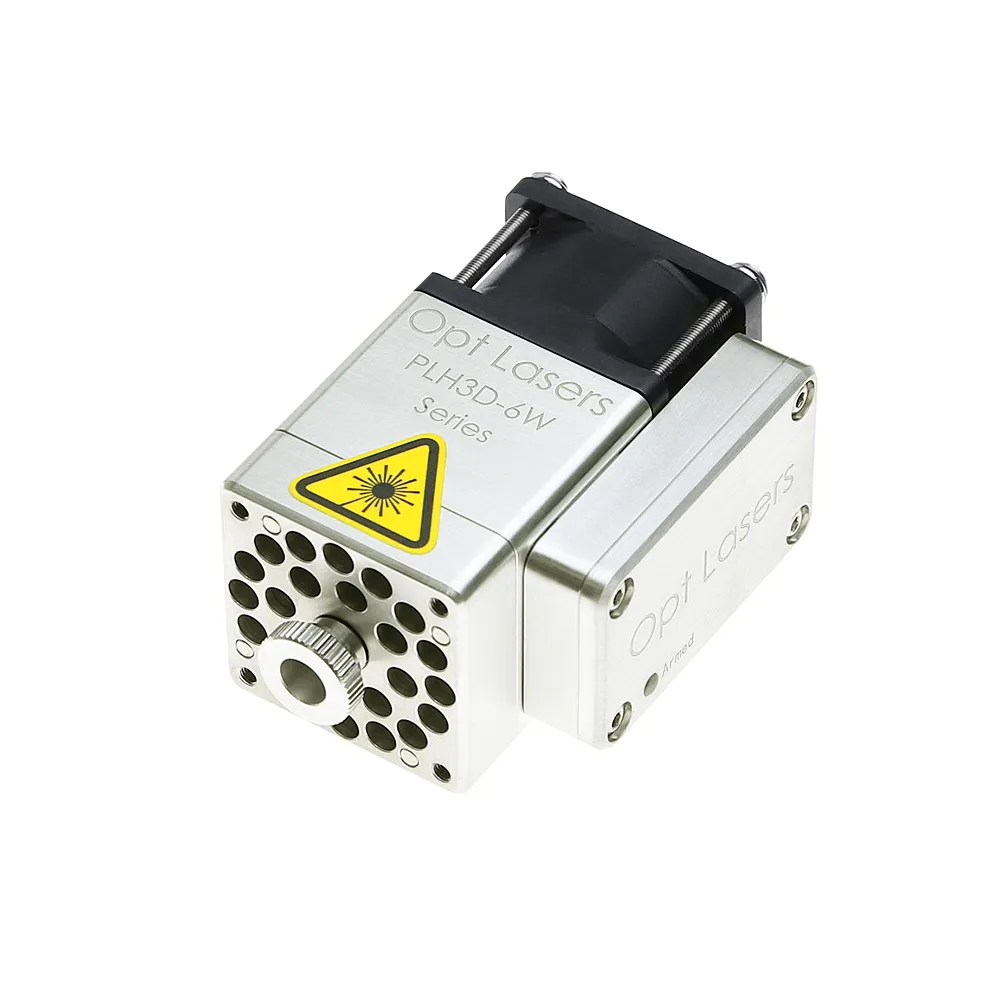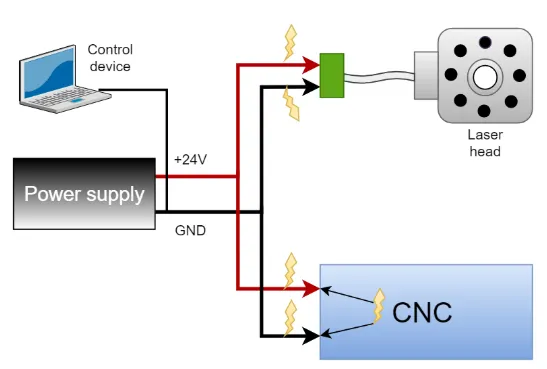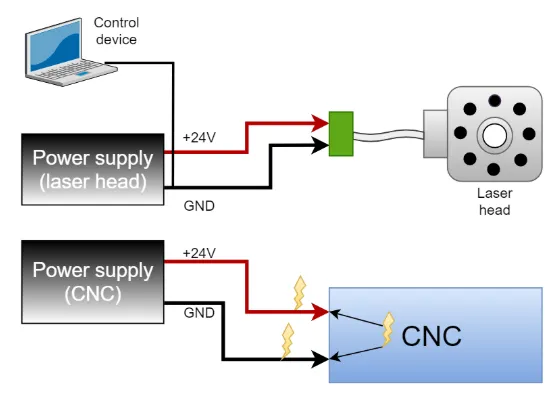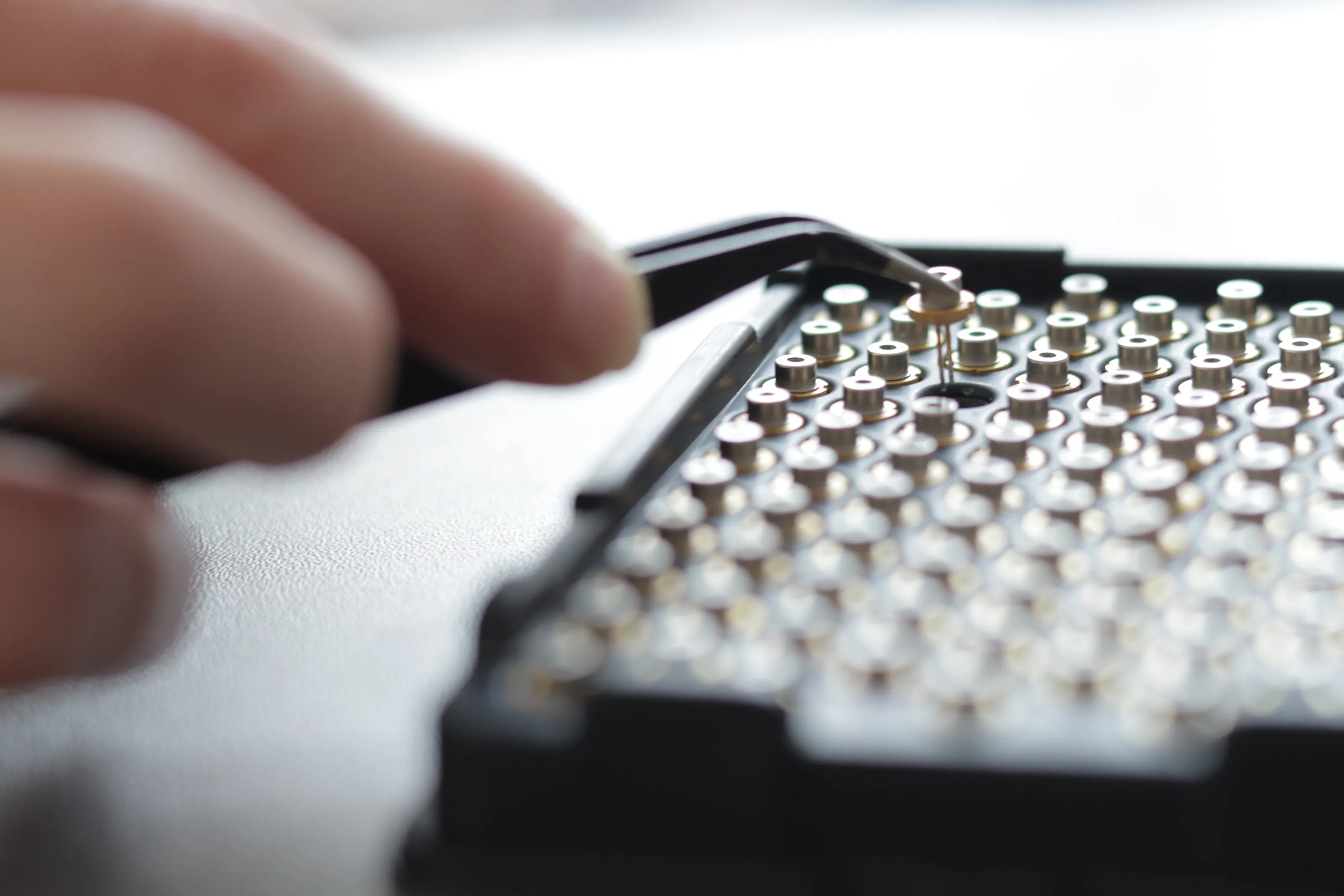Despite the fact that contemporary electronic devices have reached impressive miniaturization, they are still becoming increasingly densely packed. As electronics require ever-growing functionality, close packing within a tiny space calls for a continuously reduced size of semiconductors on printed circuit boards. Nevertheless, these miniscule components are particularly vulnerable to the electrostatic discharge (ESD).
Semiconductor laser diodes, which are crucial for the task of engraving, cutting, or sheer lasing, are extremely ESD-damage susceptible. Furthermore, laser diodes are unsafe while in contact with the surrounding environment. Consequently, handling these delicate parts should always be done with the greatest care. While careful handling is of an utmost importance, modern integrated circuits (IC) and boards should preferentially have an additional protection from static electricity. Unfortunately, in some cases, manufacturers don’t even add any protective circuitry. Even though our products utilize numerous fast precision-made components that are also theoretically vulnerable to the ESD, we always take care to use protection diodes on both signal and power connections. Such precaution increases the degree of robustness in the CNC environment. The majority of laser head electronics on our offer is also additionally protected with metal covers, which ensures higher reliability in typical conditions and shields your device from potential ECD-caused wear. As a result of these safety measures, our products are devoid of any ESD damage issues, as shown in our testing and quality control.

So, where does this electrostatic discharge actually come from? First of all, it’s worth noting that the human body continues to collect charge as it moves. If the floor is made of improper material (any non-conductive surface that stores charge), clothes are made from synthetics (in particular polyester or acetate) and the air is dry, then the perfect conditions are set. The accumulated charge values can vary and could correspond to a voltage of anywhere between a few hundred volts and 10 000 V. Any supplementary electronic components, which are able to collect and pass charge to sensitive devices, could be yet another source of high static potential.
To avoid damage you have to hold on to a few important rules:
- Always keep your electronic boards or components in an ESD-dissipative packaging. Before taking them out, grab a piece of it through a foil or foam in a firm manner to equalize potential.
- While handling laser diodes and other electrical components you are physically connected to our products. In such cases always remember to wear an antistatic wrist strap connected to a grounding point as this is the most effective way to prevent ESD damage.
- Use ESD tools while working with screw terminals or solder points.
- There are also additional preventive steps you can take, but these are not as crucial:
- Wear ESD protective clothing.
- Keep the air either humidified (at about 50%) or ionized.
- Use an anti-static mat, which serves to minimize or completely get rid of a possibility of a charge building up on you or your work station.
Yet another threat for the laser equipment are the voltage spikes or power surges on power supply lines. Such hazardous conditions could arise from CNC machine switches, motors and other powered devices that are connected to laser drivers or laser engraving heads.

The diagram above depicts an overvoltage propagating from the power supply to a laser head. This phenomenon can be stopped from ever occurring with a simple fix. By adding a secondary power supply the power lines are split, hence avoiding unnecessary potential damage. Such a solution is obviously slightly more costly, but it could prevent an unforeseeable accident that could result in an absolute deterioration of a laser head.

Alas, yet another problem could arise from a CNC machine power supply itself. Is its quality high enough to filter AC power line voltage spikes and distortions? What about its voltage regulation, is it sufficient? Laser devices are known for being quite demanding in terms of having an unperturbed supply voltage. You can always check the recommended power supply units, carefully selected for best performance by our team at Opt Lasers.

